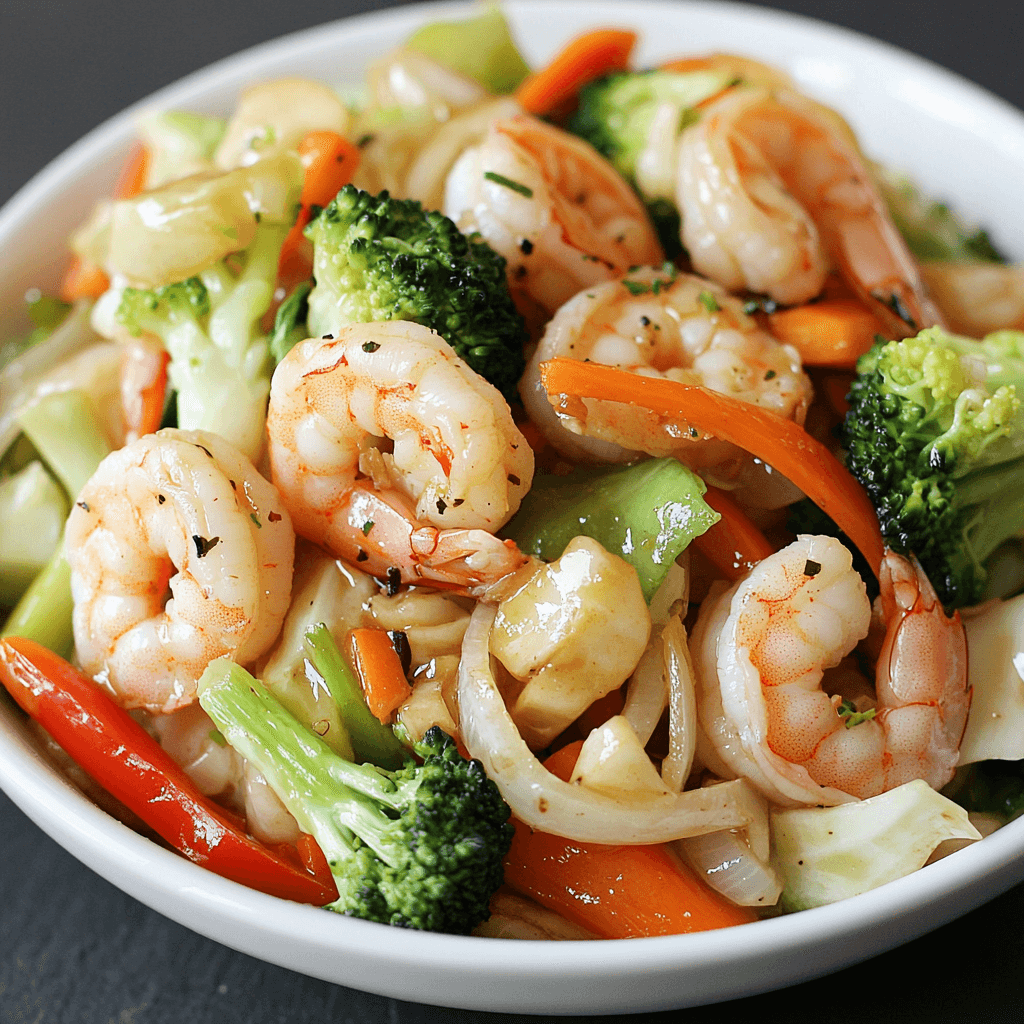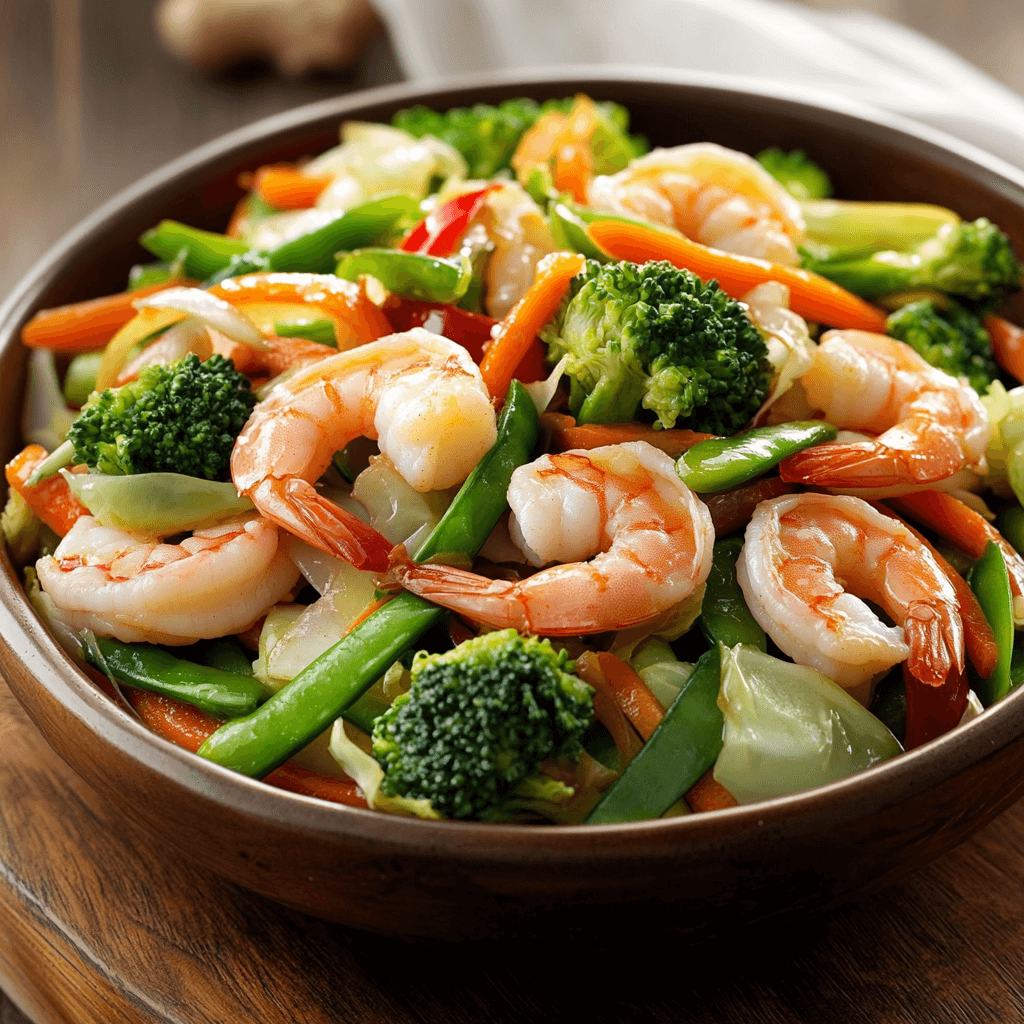When it comes to preparing a meal that is both healthy and full of flavor, stir-fried vegetables are often at the top of the list. Vegetables, with their natural colors, flavors, and nutritional benefits, make a perfect base for a variety of dishes. One such dish that brings a delightful twist to the traditional stir-fry is Stir-Fried Veggies in White Sauce. This dish combines the crisp, fresh texture of vegetables with a creamy, savory white sauce, creating a comforting yet light meal that is perfect for any occasion.
Stir-frying is a popular cooking method across many cultures, especially in Asian cuisine, where it allows vegetables to retain their crunch while developing rich flavors. The addition of a white sauce – often made with ingredients like cream, butter, and seasonings – enhances the dish with a silky smooth texture and a savory depth. Whether you’re serving it as a side dish or a main course, Stir-Fried Veggies in White Sauce offers a great balance of health, taste, and visual appeal.
In this article, we’ll explore the recipe for Stir-Fried Veggies in White Sauce, its history, the ingredients needed, and provide step-by-step instructions on how to prepare this delicious dish. We will also suggest variations of the recipe, provide health benefits, and answer some frequently asked questions to ensure you can make the best version possible at home.
Overview of the Recipe
Stir-Fried Veggies in White Sauce is a simple yet flavorful dish that brings together fresh vegetables, a savory white sauce, and the perfect stir-fry technique. The vegetables are lightly cooked in a hot wok or skillet to preserve their crispiness, while the white sauce coats them in a creamy, velvety texture that elevates the dish. The white sauce is often made with a combination of butter, cream, milk, and seasoning, resulting in a mild yet rich flavor that complements the vegetables perfectly.
This dish is versatile, as you can choose from a variety of vegetables based on your preferences or what is available in season. Some of the most popular vegetables to use are bell peppers, broccoli, carrots, snow peas, and mushrooms, though you can experiment with others such as zucchini, cauliflower, or green beans. The beauty of this recipe lies in its flexibility, allowing you to create your own combination of vegetables to suit your taste.
Stir-Fried Veggies in White Sauce is a great option for those looking for a meatless meal, a side dish to accompany a main course, or a light dinner. The combination of vegetables with a creamy sauce ensures that the dish is both satisfying and nutritious, making it a perfect option for families, vegetarians, and anyone looking to enjoy more plant-based meals.

History and Origin
The origins of stir-frying can be traced back to China, where it became a staple cooking technique. Stir-frying involves cooking ingredients quickly in a small amount of oil over high heat, which helps retain the natural flavors and textures of the ingredients. This method was developed as a time-efficient and energy-saving way to prepare food, making it ideal for busy households or street vendors.
The concept of stir-fried vegetables, especially in sauces, is not limited to Chinese cuisine. Many Asian cultures, including Thai, Korean, and Japanese, use stir-fried vegetables in their dishes, often incorporating rich sauces to complement the natural flavors. White sauces, in particular, are a common feature in Western cuisines, especially in French and Italian cooking, where they form the base for various dishes like pasta or seafood. The combination of the two – the Asian-style stir-fry with a Western-style white sauce – is an innovation that bridges different culinary traditions, creating a fusion of flavors that is both comforting and exciting.
Stir-Fried Veggies in White Sauce likely emerged as part of the global fusion food trend, where traditional cooking methods from different parts of the world are combined to create new, creative dishes. It is a popular choice in many contemporary kitchens, offering a quick and easy way to enjoy vegetables with a delicious sauce.
Ingredients
To make Stir-Fried Veggies in White Sauce, you will need fresh vegetables, basic pantry items, and a few ingredients for the white sauce. Below is the ingredient list to serve 4 people:
Stir-Fried Vegetables:
- 1 tablespoon olive oil or vegetable oil
- 1 small onion, thinly sliced
- 1 bell pepper, sliced (red, yellow, or green)
- 1 carrot, julienned or thinly sliced
- 1 cup broccoli florets
- 1/2 cup snow peas or snap peas
- 1/2 cup mushrooms, sliced (optional)
- 2 cloves garlic, minced
- Salt and pepper to taste
White Sauce:
- 2 tablespoons butter
- 2 tablespoons all-purpose flour
- 1 cup milk (whole or low-fat)
- 1/4 cup heavy cream (optional for extra creaminess)
- 1/2 teaspoon garlic powder
- 1/2 teaspoon onion powder
- Salt and pepper to taste
- 1/2 teaspoon dried thyme (optional for added flavor)
Garnishes (Optional):
- Fresh parsley or basil, chopped
- Grated Parmesan cheese (optional)
- Crushed red pepper flakes for a little heat (optional)
Note: You can adjust the quantity of vegetables based on your preferences or availability. Feel free to add or remove vegetables as you see fit. This recipe is flexible and can be customized to suit your taste.

Instructions
Follow these steps to make Stir-Fried Veggies in White Sauce:
1: Prepare the Vegetables
- Wash and peel the vegetables as needed. Cut them into bite-sized pieces. For the best texture, it’s important to slice the vegetables thinly so they cook quickly and evenly. For instance, julienne the carrots, slice the bell pepper into strips, and break the broccoli into small florets.
- Prepare the garlic by peeling and mincing it finely.
2: Make the White Sauce
- In a medium saucepan, melt the butter over medium heat.
- Once the butter is melted, add the flour and whisk it continuously to form a smooth paste (this is called a roux). Cook the flour for about 1-2 minutes until it turns a light golden color. This helps eliminate the raw taste of the flour.
- Slowly add the milk to the roux while continuously whisking to prevent lumps from forming. Once the milk is fully incorporated, let it simmer for 2-3 minutes until the sauce thickens.
- Stir in the heavy cream (if using) and continue to whisk until smooth.
- Add the garlic powder, onion powder, thyme (if using), salt, and pepper to taste. Adjust the seasoning as necessary.
- Keep the sauce warm over low heat while you stir-fry the vegetables.
3: Stir-Fry the Vegetables
- Heat the oil in a large wok or skillet over medium-high heat.
- Add the sliced onion and garlic, and stir-fry for about 2 minutes until the onion becomes soft and translucent.
- Add the rest of the vegetables to the wok. Stir-fry for 5-7 minutes, stirring occasionally, until the vegetables are tender-crisp. Be careful not to overcook them to retain their color and crunch.
- Season the vegetables with salt and pepper to taste.
4: Combine the Sauce and Vegetables
- Once the vegetables are cooked, pour the white sauce over them and gently toss everything together until the vegetables are coated in the creamy sauce.
- Let the mixture simmer for another 2 minutes to allow the flavors to meld together.
- Taste and adjust the seasoning, if needed.
5: Serve
- Transfer the stir-fried veggies to serving plates. Garnish with freshly chopped parsley or basil, grated Parmesan, or crushed red pepper flakes for extra flavor.
- Serve hot as a side dish or with steamed rice or noodles for a complete meal.
Pairing and Serving Suggestions
Stir-Fried Veggies in White Sauce can be served in a variety of ways, depending on the occasion:
- As a Main Dish: Serve the stir-fried veggies with a bowl of steamed rice or quinoa for a satisfying, plant-based meal. You could also serve them with whole wheat pasta for a pasta-style dish.
- As a Side Dish: Pair this dish with grilled chicken, steak, or fish for a wholesome, balanced meal. The creamy vegetables complement protein-rich dishes beautifully.
- With Bread: Serve with crusty bread, like a baguette or dinner rolls, to soak up the creamy sauce.
- For a Comforting Meal: Pair it with a light soup, like tomato or butternut squash, for a cozy dinner on a cool evening.
Variations of the Recipe
While the base recipe is simple and delicious, there are plenty of ways to modify and make this dish your own:
- Add Protein: For a heartier meal, you can add tofu, paneer, or chicken to the stir-fry. Simply cook the protein separately and add it to the veggies and white sauce in the final step.
- Use Different Vegetables: Feel free to swap out vegetables based on your preferences or what’s in season. Cauliflower, zucchini, or green beans are all great alternatives.
- Spicy Version: For those who like a little heat, add some chili flakes or fresh sliced red chilies to the stir-fry. You can also add a teaspoon of sriracha to the white sauce for a spicy kick.
- Vegan Version: To make this dish vegan, substitute the butter with olive oil, and use plant-based milk (like almond or soy milk) and vegan cream if needed. You can also replace dairy cheese with nutritional yeast for a cheesy flavor.
Health Benefits Notes
Stir-Fried Veggies in White Sauce is a nutritious dish that provides several health benefits:
- Rich in Vegetables: The dish is packed with a variety of vegetables, providing essential vitamins, minerals, and fiber. These nutrients are important for maintaining a healthy immune system, good digestion, and overall well-being.
- Low in Calories: If prepared with minimal oil and without excessive amounts of cream, this dish can be low in calories, making it a great option for those looking to eat healthily.
- Rich in Antioxidants: Many of the vegetables used in this recipe, such as broccoli, bell peppers, and carrots, are rich in antioxidants, which help fight free radicals and support overall health.
FAQs
Q1: Can I make Stir-Fried Veggies in White Sauce ahead of time?
Yes! You can prepare the vegetables and white sauce ahead of time and store them separately in the refrigerator. When you’re ready to serve, just reheat the sauce and toss it with the stir-fried vegetables.
Q2: Can I use frozen vegetables?
Fresh vegetables are recommended for the best texture and flavor, but frozen vegetables can also be used. Just make sure to thaw and drain them before stir-frying.
Q3: How do I make the white sauce thicker?
If the sauce is too thin, you can add a bit more flour (1 teaspoon at a time) to thicken it. Alternatively, let the sauce simmer for a few more minutes to reduce and thicken naturally.
Q4: Can I make this recipe gluten-free?
Yes! To make the recipe gluten-free, use a gluten-free flour blend for the white sauce. You can also serve the dish with gluten-free noodles or rice.
Conclusion
Stir-Fried Veggies in White Sauce is a delightful and versatile dish that can be easily customized to suit your tastes. The combination of fresh vegetables and a creamy white sauce creates a satisfying and nutritious meal that can be enjoyed by everyone. Whether you choose to serve it as a side dish, main course, or light meal, this dish is perfect for any occasion. With its endless variations and health benefits, Stir-Fried Veggies in White Sauce will quickly become a favorite in your kitchen.
Recommended (Some Other Recipes)
- Vegetable Stir-Fry with Tofu: A protein-packed variation of the classic stir-fry.
- Mushroom Stroganoff: A creamy and rich mushroom dish perfect for cozy dinners.
- Thai Green Curry with Vegetables: A fragrant and spicy dish with coconut milk and vegetables.
- Vegan Caesar Salad: A plant-based twist on the classic Caesar salad with a creamy dressing.
- Zucchini Noodles with Pesto Sauce: A light and healthy alternative to pasta.

